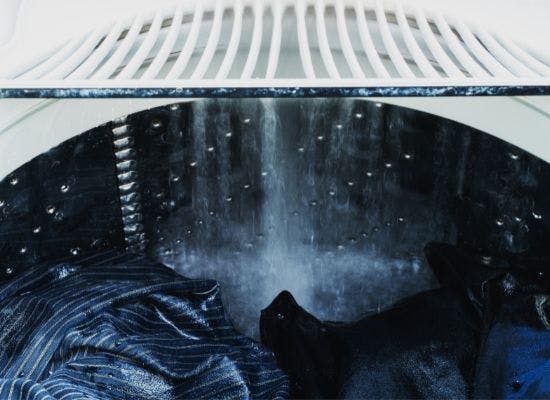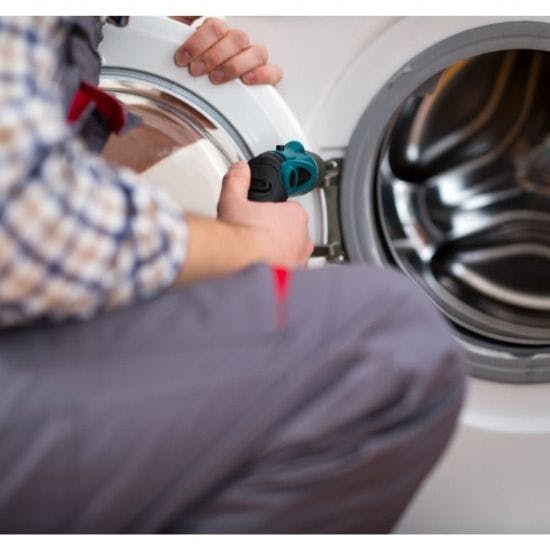Laundry
Samsung Washing Machine Not Spinning? Try This
Written by Dale Richardson - Updated: June 23, 2023
Stay Updated with Expert Tips!
Love our DIY guides and solutions for common household problems? Get expert advice, tips, and exclusive offers in our newsletter. From garden hacks to home maintenance and special deals, we've got it all. Join our growing community now!
Washing machines are awesome contraptions with a lot of moving parts. That means that they're prone to have things go wrong - no worries, though, because Fraffles is here to save the day. If your Samsung washing machine is not spinning, keep reading to get it up and running in no time. If you're a returning reader, this may seem familiar - that's because it is! We've covered the same issue with Beko and Hotpoint washers as well, so be sure to check them out if those are more relevant to you.
The most common reasons for a Samsung washing machine not spinning are an over (or under)loaded machine, poor load distribution, a dirty drain pump filter, dirty drainhose, or (worst case) a faulty motor.
That may seem like a lot if you're unfamiliar with washing woes, but don't worry - we'll be breaking it down in no time, so keep reading!
Top Causes of Samsung Washing Machines Not Spinning
Let's start with the easy stuff, yeah? It's okay to prepare for the worst, but more likely than not, you've got a minor problem that just seems major at the moment. Now without further ado, let's get into some causes and fixes for your washer not spinning.
READ NEXT: 4 Reasons why washing machines leak when not in use.
#1 Over (or Under)loaded Washing Machine

Especially if you're new to the whole "adulthood" thing, this is a very common mistake. Don't worry too much - it's a newbie mistake that we all make at some point or another. The key here is to learn from it and adapt how you do laundry in the future.
It may seem tempting to absolutely pack that machine for every tiny bit of space (especially if you're paying by the load) but don't be fooled - that only leads to failure. And the same goes for a machine that's only got one or two small items in it.
This is because washing machines have a weight limit. Something that many people don't actually know is that washing machines have weights built into the drum, allowing it to prevent tipping or violent shaking. If you notice that a) the machine is shaking or tipping, or b) that the machine won't spin at all, this is likely the cause. If the machine starts to spin and stops after a minute or so - this is almost guaranteed to be the cause.
The fix? Don't go over your machine's weight limit, and wash enough stuff to evenly balance the laundry inside. And that brings us to our next cause of a washer not spinning - load distribution.
#2 Load Distribution

This is, bar none, one of the most common mistakes I see people making at my local laundromat. They've got towels, blankets, bedding, and clothes to wash and decide to just pick the "most important" things from each group to wash in the first load. A towel here, two blankets there, some sheets, and the favourite sweater all go in together. And then the machine won't spin.
"But why!?" they ask. The answer? Load distribution.
In short, this also has to do with the weight of what you're washing, just like the above tip. Remember how I said that washing machines have weights built in to keep them on balance? That's exactly why this is a problem - putting drastically heavier and lighter items together will unbalance your washer. Rather than washing whatever you want, try to balance the weight of everything evenly.
And if you notice that the one heavy blanket is bunched on one side, untangle it and evenly wrap it around the drum - trust me.
The fix to this issue is simple - add enough items of similar weight in each load of laundry that weight isn't resting on one side more than the other, and voila! You should have a spinning washer in no time.
#3 Drain Pump Filter

The next two problems are caused by everyone's favourite thing to procrastinate - cleaning. In this case, a lack of it. As with all things in life, you need to clean out your washer's drain pump filter and hose regularly (roughly every six weeks). Where do you think all of the grime, hair, and other miscellaneous refuse goes when you wash? They go through the pump filter and hose, to be discarded.
When you don't clean these two parts, the gross stuff from your clothes builds up and will eventually block drainage altogether. If you're noticing:
- Your washing machine doesn't spin at all (that's why you're here)
- The spin cycle takes much longer than it should to complete
- The spin cycle causes shaking and lots of noise, or
- The washer doesn't drain fully, leaving you with extra-wet clothes
Then this is likely the cause of your problem.
Here's how to clean your pump filter, with a video guide for those who work visually:
- Collect a large basin or bowl and several sacrificial towels. These will help clean up the water and any potential spills.
- Locate the filter cover on the front (usually bottom right) of the machine. This is opened with a push or a small object (like a coin or knife), depending on the model.
- Pull the emergency drain hose and cap, letting water spill into your basin. Fully drain all water, this may take several goes (hence the large bowl).
- Turn the drain cap counter-clockwise and remove it. Clean any debris that's visible inside.
- Rinse and replace the filter, replace the drain hose and its cap, and secure everything.
#4 Drain Hose

This process is very similar to the above, just with a different part, so we're going to skip the introduction here. If you need to do this after trying to run a load of laundry, be sure to remove all laundry (wringing it out if needed). Also, bail any water that's collected in the drum.
To clean a drain hose, do the following:
- Turn off power at the breaker to your washing machine. Now, unplug it.
- Pull the washer out enough that you can easily fit behind it. Get a friend to help - those things are heavy and there's no sense in letting a washing machine throw your back out. You'd feel pretty silly if you did (especially after being warned).
- Using a wrench, detach the drain hose (the large corrugated plastic pipe attached to the drain).
- Using a large basin or bowl, collect the water that falls out.
- Clear out any debris in the pipe itself. Some people recommend a wire hanger, but I personally have found that an auger (if you have one) works wonders here.
- Replace the pipe, plug everything back in, and test the machine.
#5 Have You Tried Turning It Off and Back On Again?

Okay, that headline was a bit of a misleading question, but I couldn't resist. Samsung washers are software-heavy devices. meaning the program that allows them to function could simply have crashed.
To restart the program, you do indeed need to turn the machine off and back on again - with a hard reset (aka power cycle). To do this, simply:
- Turn off the machine.
- Unplug it, leaving it unplugged for five minutes.
- Plug it in, turn it on, and retry washing.
This allows the internal memory to clear and gives it a chance to "wake up" so to speak, clearing any old bits of code that were hindering the machine from working.
#6 Faulty Motor

This is the worst-case cause of a Samsung washing machine not spinning. Your machine uses a motor to spin the drum, and if that motor dies, the machine won't spin. If this is the case, your washer will display an error code, which you can decipher here . To fix this, you're going to need to do one of two things: call a professional, or try to fix it yourself.
If you want to try it yourself, you'll need to follow the instructions given by your manual (or the above link) to the letter. Give it a hard reset like in tip #5, and try again. If it doesn't work, you can call a professional for help. That can get expensive fast though, so if you feel it's time for a washer upgrade, check out our guides to the best: overall washing machines , best energy-efficient washing machines , or if you ball on a budget, the best budget washing machines .
Final Thoughts
Washing machines are complicated, and they're only getting more so the faster we integrate software into them. Usually, though, the issues that arise are from operator error rather than a hardware or software malfunction. Begin by making sure you're balancing your loads and keeping them properly sized. Don't forget to regularly clean your drain hose and pump filter, and finally, take a look at the software and motor if your Samsung washing machine is not spinning.
And don't try to invest everything into fixing your washer. Sometimes the best thing you can do is recognize when a tool is at the end of its life and just... move on. Replace the thing with something new and shiny - and please, discard your old washer properly. Electronics are not biodegradable, meaning recycling is of the utmost importance when replacing them.
One More Thing Before You Go!
Craving more DIY insights? Don't miss our expert guides and exclusive deals. Subscribe now and get the best of home and garden tips straight to your inbox. Join our community and stay in the know!
Get Cashback Faster & Earn Free Fraffle Tickets
Shop at your favourite stores and enjoy cashback in days, not months. Plus, sign up today to get 5x Free Fraffle tickets!


















